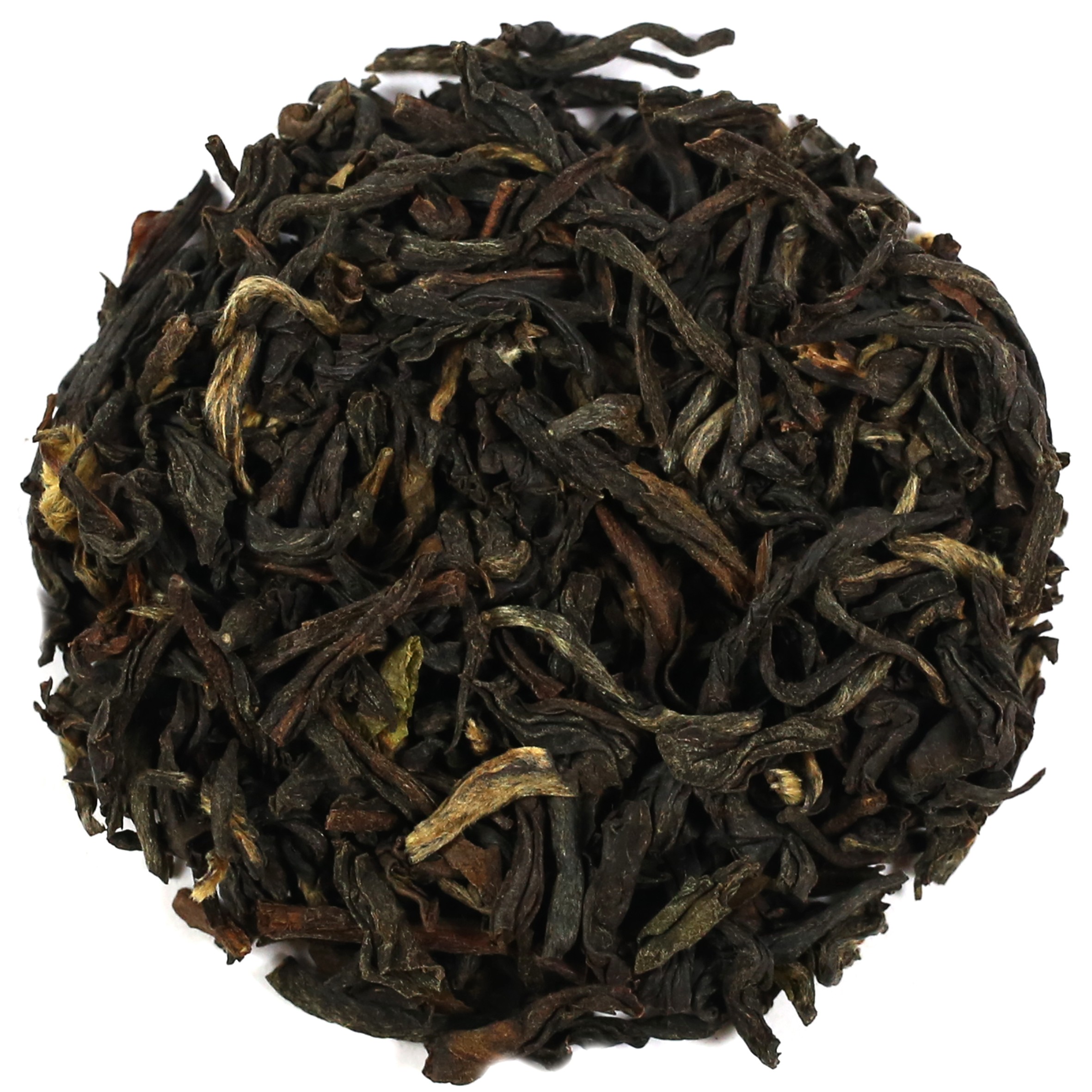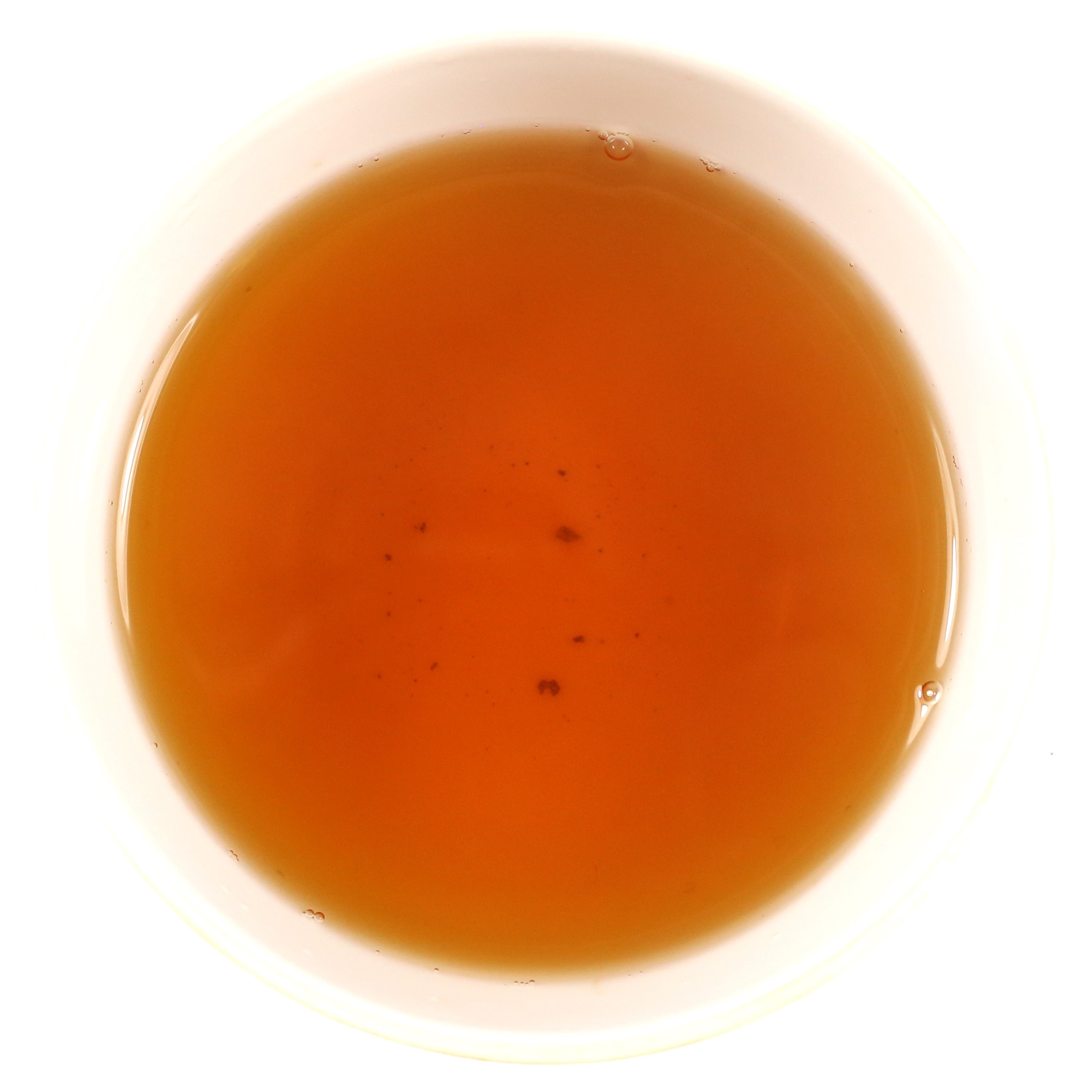.
Black Tea Brewing Guide

1 Teaspoon
Add 1 teaspoon per person and one for the pot.

95⁰c - 100⁰c
Boil using fresh water, at a temperature of 95⁰ - 100⁰c.

3 - 5 Mins
Steep for 3-5 minutes, depending on personal preference
About Product
-
Product Description
If Darjeeling Tea is known as “The Champagne of Teas”, Second Flush Teas are often considered the ‘lesser’ flush compared with what comes before. However, this is not the case with this brew; far from it, in fact. Darjeeling Second Flush Tea Castleton is from the Castleton Tea estate part of the Goodricke Tea plantation group. The tea garden was planted in 1885 by Doctor Charles Graham and is situated near the town of Kurseong of the Kurseong district.
Today, the estate covers around 471 hectares, 318 hectares of which is under tea cultivation. Often the case with the Castleton Estate, its production techniques are closely guarded secrets, but outside of picking, much of the production process is mechanised to ensure consistency. This particular tea is noted for its muscatel flavour; a characteristic often found in many Darjeeling Teas; and it’s fine, neat leaf.
To understand the history of Darjeeling Tea from the very beginning, one must travel around 400 miles to the state of Assam, where Indian Tea was first discovered. This took place in 1823 following a diplomatic mission made by a Scottish merchant and adventurer called Robert Bruce to develop close ties with the Singpho Tribe near Rangpur (present day Sivasagar). The leader of the tribe had gifted Bruce with what was then an unidentified specimen of a plant, and what later turned out to be Camellia Sinensis var Assamica; a close relative to the Chinese Camellia Sinensis var Sinensis. Once the discovery was made official, the tea trade in India was quick to expand with Darjeeling later becoming a favoured location for tea cultivation.
By 1866; just 43 years after the discovery of Indian tea; 39 plantations had already been established in the Darjeeling region. This covered approximately 1,000 acres, with the district producing an estimated 133,000 lbs of tea each year. Less than a hundred years later, India rightfully attained Independence resulting in a mass ‘changing-of-hands’ of Darjeeling tea estates from British to Indian owners.Unfortunately, Darjeeling’s rocky history did not end there, as following the independence movement, new political turmoil took hold in the district and the state of West Bengal as a whole. Unfortunately, this is still ongoing today. Despite this, Darjeeling now boasts 87 plantations spread over 17,500 hectares. The Darjeeling tea industry also employs 52,000 people in peak season, of which around 60% are believed to be female workers. This tea is just one of many to originate from Darjeeling, but we also believe it is one of the best, too. Don’t just take our word for it, try our Darjeeling Second Flush Castleton for yourself.
Type of Tea: Loose Leaf Black Tea. TGFOP1 Second Flush ( Tippy Golden Flowery Orange Pekoe 1 ).
Origin: The Castleton Estate, Darjeeling, India.
Brewing Instructions: Brew using freshly boiled water and infuse for 3 to 5 minutes.
How to Serve: A slice of lemon makes for a delicious accompaniment; however; The Kent and Sussex Tea and Coffee Company believe this beverage is best served as it is.
Tasting Notes: This tea is unmistakably “Darjeeling”, and yet, somehow, it’s also completely unique! Defined muscatel aromas and flavours are perhaps the most recognisable characteristics. But then you have strong woody, and even smoky undertones which offer a beautifully complex profile. Ultimately, Darjeeling 2nd Flush Castleton is a perfect fusion of flavours.
Colour in Cup: Coppery-orange liquor, light in tone.
Health Benefits: All black teas contain two special antioxidants called theaflavin and thearubigin. Although believed to be less substantial for their beneficial properties in comparison with Green Tea, these constituents still have the capability of combating free radicals found within the body. In doing so, this tea can improve cardiovascular health. It can also reduce the risks of Type II Diabetes, and even go as far as enhancing cognitive function. -
Delivery Information
We offer reliable delivery services through Royal Mail to ensure that your orders reach you on time.
Here are the main points you should be aware of:
- Standard UK Delivery: £3.95 excluding delivery charge.
- Delivery Times: Orders are processed and dispatched within 2-5 working days but they may take longer during busy times. It is worth noting that all our orders are packed by hand in order to maintain the quality.
- Free Delivery: We are delighted to provide free shipping for UK orders over £35*. Moreover, customers from Europe can enjoy free shipping for any purchase above €75*. Furthermore, we offer free delivery in the USA for all purchases exceeding $125*. Please note terms and conditions may apply.
- Tracking: When your package is sent you will receive a tracking number via email so as to keep tabs of its progress.
International Shipping
We do ship worldwide meaning our products can be accessed by anyone around the world.
Here are some important details:
- Delivery Times: International deliveries vary based on destination, generally taking between 7-14 working days.
- Shipping Costs: International shipping costs are calculated at checkout based on your location and weight of your order. View full delivery charges for your location.
- Customs and Import Duties: Remember customs or import duties may exist depending on regulations in your country; these charges are borne by the customer.
Returns Policy
Your satisfaction is our top priority, however if for any reasons you’re not completely happy with your purchase, simply follow our returns procedure:
- Eligibility: Items returned within 30 days of receipt must remain unopened and in their original condition.
- Process: In order to return an item contact our customer service department using your unique order number after which detailed instructions will be given concerning returning them back to us securely.
- Refunds: Our aim is to refund you within 5-7 working days upon successful reception of returned goods. The refund amount will be credited to your original payment method.
For any other Enquiries or help please contact our Customer Support Team always at your service.
-
Product Reviews

 Loose Leaf Tea
Loose Leaf Tea Pyramids
Pyramids Tea Bags
Tea Bags Africa
Africa Assam
Assam Ceylon
Ceylon Chinese
Chinese Darjeeling
Darjeeling European
European Indian
Indian Japan
Japan Nepal
Nepal South East Asia
South East Asia Ayurveda Tea
Ayurveda Tea Black Tea
Black Tea Chai Tea
Chai Tea Flowering Tea
Flowering Tea Fruit Tisanes
Fruit Tisanes Green Tea
Green Tea Herbal Tea
Herbal Tea Matcha Tea
Matcha Tea Oolong Tea
Oolong Tea Organic Tea
Organic Tea Pu erh Tea
Pu erh Tea Rooibos Tea
Rooibos Tea White Tea
White Tea Asian Coffee
Asian Coffee Caribbean Coffee
Caribbean Coffee Central American Coffee
Central American Coffee South American Coffee
South American Coffee Coffee Blends
Coffee Blends Decaffeinated Coffee
Decaffeinated Coffee Espresso Coffee
Espresso Coffee Ethically Sourced Coffee
Ethically Sourced Coffee Flavoured Coffee
Flavoured Coffee Organic Coffee
Organic Coffee Single Origin Coffee
Single Origin Coffee Chocolate 1
Chocolate 1 Chocolate 2
Chocolate 2 Chocolate 3
Chocolate 3 Chocolate 4
Chocolate 4 Chocolate 5
Chocolate 5 Chocolate 6
Chocolate 6 Chocolate 7
Chocolate 7 Chocolate 8
Chocolate 8 Chocolate 9
Chocolate 9 Loose Tea Filters
Loose Tea Filters Tea Accessories
Tea Accessories Tea Bricks
Tea Bricks Tea Caddies
Tea Caddies Tea Caddy Spoons
Tea Caddy Spoons Tea Gift Ideas
Tea Gift Ideas Tea Infusers
Tea Infusers Tea Strainers
Tea Strainers




